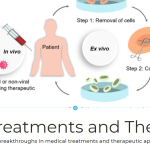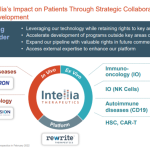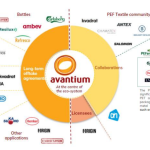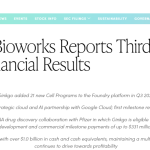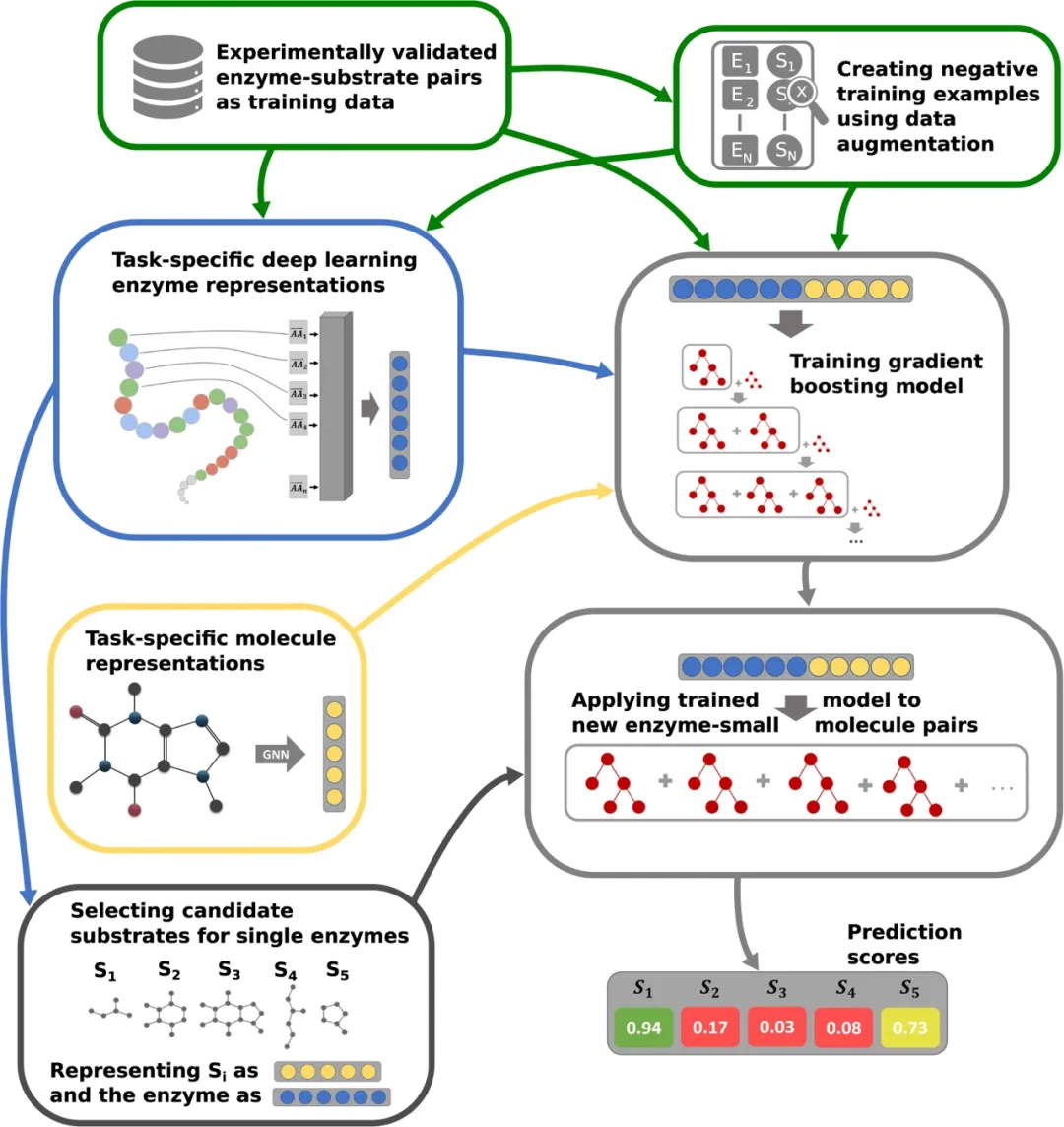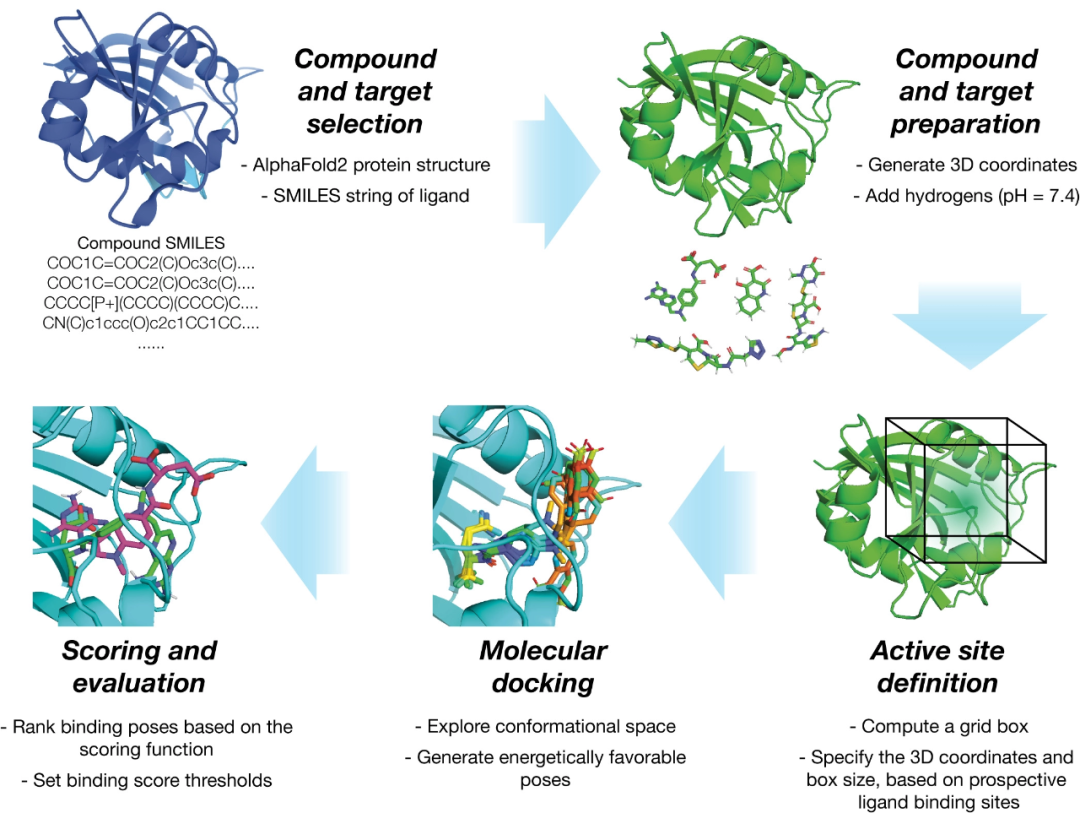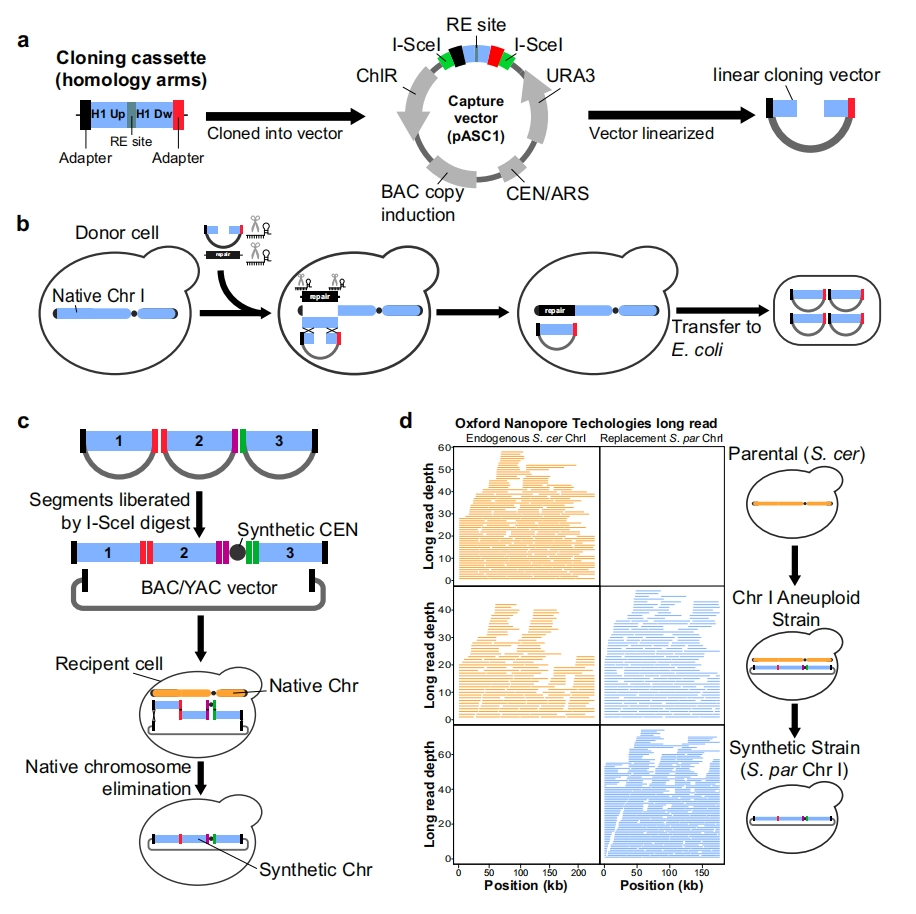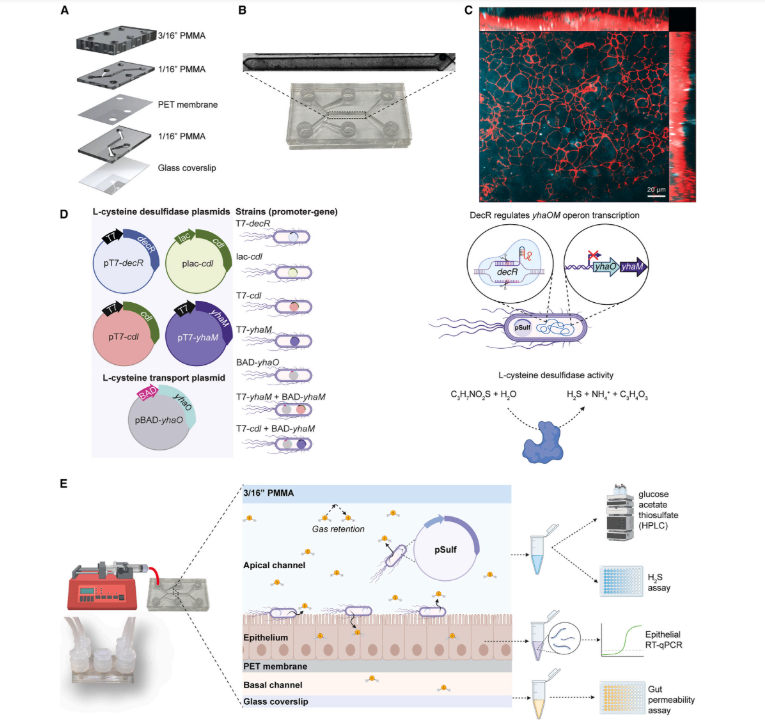mRNA Display: Revolutionizing Drug Discovery Through In Vitro Evolution
Introduction
The identification of new drugs traditionally depended on examining natural substances or creating small molecular structures that interact with proteins. Traditional methods find many disease-related proteins like protein-protein interaction elements to be “undruggable.” Through mRNA display technology, scientists can now conduct in vitro evolution to produce high-affinity peptide ligands which surpass existing limitations.
mRNA display functions completely in vitro unlike phage display which depends on bacterial systems to create expansive libraries of up to 10^14 variants and incorporate unnatural amino acids. The ability to create diverse libraries and include unnatural amino acids makes mRNA display essential for identifying cyclic peptides, macrocycles, and photocrosslinking ligands which play crucial roles in contemporary therapeutic strategies.
In this blog post, we’ll explore:
How mRNA display works
Its key applications in drug discovery
How it compares to phage display
Success stories and future directions
How mRNA Display Works
mRNA display technology enables in vitro screening of polypeptides and proteins. The formation of an mRNA-protein complex through covalent binding enables researchers to study protein interactions and perform functional screening. The operating mechanism and procedural steps are detailed below:
1. Constructing random DNA libraries
Random DNA sequences used as polypeptide templates originate from mRNA molecules through in vitro transcription technology.
Ligation of mRNA to puromycin: The mRNA molecule forms an mRNA-puromycin complex by covalent bonding with puromycin. Puromycin mimics aminoacyl-tRNA while enabling attachment to mRNA amino acids to produce stable mRNA-peptide conjugates.
2. In vitro translation produces polypeptides
The puromycin-aminoacyl-tRNA complex forms with the ribosome in cell-free systems to create mRNA-protein complexes. The absence of cells in this process allows for increased flexibility and controllability.
3. Affinity screening
Utilize affinity chromatography or magnetic beads to capture the target protein from the mRNA-protein complex. Subsequent enrichment and screening steps recover the bound mRNA through either elution or PCR amplification.
4. Enrichment and cyclic selection
Multiple rounds of screening and enrichment help enhance the interaction between the target protein and the polypeptide while better optimizing complex stability.
5. Post-translational modifications
The ability to insert unnatural amino acids into mRNA display technologies serves to extend chemical diversity while enhancing the efficiency of screening processes. Post-translational modification processes enable both enzymatic activation and chemical alterations of peptides.
Key Advantages of mRNA Display
High diversity: This technology creates libraries that contain between 10^13 and 10^15 distinct sequences which exceeds the capabilities of traditional screening methods.
Context-free: The screening process remains unaffected by the expression and translation environment while effectively screening complex proteins.
High flexibility: Experiments can be customized flexibly through adjustments of screening conditions and reaction systems.
mRNA display technology also has some limitations
Stability problem: The effectiveness of the screening process relies on the stability of the mRNA-protein complex which requires optimization.
Low translation efficiency: The display efficiency remains low for small peptides under 300 amino acids and large molecular proteins show poor display effects.
The mRNA display technique provides efficient in vitro screening and functional investigation through the covalent linkage of mRNA and protein which finds broad application in protein interactions research along with drug discovery and biotechnology fields.
Applications of mRNA Display in Drug Discovery
mRNA display technology shows its main applications in drug discovery through these key areas:
- Screening of high-affinity binding peptides
The mRNA display technology combines mRNA with its corresponding translated polypeptides or proteins through covalent bonds to create mRNA-protein fusions which enables functional polypeptide and protein screening across large-capacity libraries. This method serves as a common tool for selecting high-affinity binding peptides in areas including antibody simulation and drug target recognition. This method is pivotal for antibody simulation and drug target recognition, as detailed in mRNA Display-based Peptide Discovery.

General selection scheme for target-binding partners using mRNA display.(H Wang, et al. 2011)
- Protein-protein interaction research
The mRNA display technology enables researchers to study protein interaction mechanisms including those involving challenging targets like disordered essential proteins or membrane proteins which remain undetectable by traditional methods. Researchers have successfully identified natural downstream substrates of kinases and enzymes through this method.
- Peptide drug research and development
The development of peptide drugs heavily relies on mRNA display technology for research purposes. This technology enables researchers to discover new therapeutic drugs through the screening of functional polypeptides. Researchers at the University of Leiden in the Netherlands identified non-competitive NNMT inhibitors using this technology and scientists at the University of Tokyo in Japan discovered cyclopeptide inhibitors for glycosyltransferase. CD Biosynsis’ peptide discovery services further advance this field.
- Identification of disease-related targets
With mRNA display technology researchers can discover disease-related targets by screening molecules that bind to specific receptors or enzymes which leads to the development of diagnostic tools and therapeutic drugs.
- Drug delivery mechanism research
This technology enables researchers to improve drug delivery methods by identifying molecules capable of binding specifically to target cells.
- Discovery of innovative drug candidate molecules
The application of mRNA display technology provides an expedited multi-molecule discovery platform for innovative therapeutic molecule identification. CD BioSciences built an advanced multi-molecule discovery platform using this technology to aid early drug discovery.
The mRNA display technology demonstrates extensive potential in drug discovery through applications such as high-affinity binding peptide screening and protein interaction research alongside peptide drug development and disease target identification which leads to finding novel drug candidate molecules. Platforms like CD Biosynsis’ multi-molecule discovery service accelerate therapeutic molecule identification.
mRNA Display vs. Phage Display
| Feature | mRNA Display | Phage Display |
| Library Size | 10^13-10^14 | ~10^9 |
| Selection Environment | Fully in vitro | Requires bacterial infection |
| Chemical Diversity | Supports unnatural amino acids | Limited to natural amino acids |
| Throughput | High (no cellular bottlenecks) | Lower (dependent on phage propagation) |
| Affinity Maturation | More efficient due to stringent selection | May require additional optimization |
Why mRNA Display Often Wins
Larger libraries → Higher chance of finding rare, high-affinity binders.
No biological constraints → Can use D-amino acids, N-methylation, and macrocyclization.
Faster selection cycles (no need for bacterial amplification).
However, phage display still excels in antibody discovery due to well-established protocols.
Case Studies & Success Stories
The introduction of mRNA display technology has transformed therapeutic development against stubborn biological targets by enabling the creation of macrocyclic peptides. The constrained molecules exhibit both biologics’ binding specificity and small molecules’ cell-penetrating abilities making them perfect for proteins without traditional binding pockets. We will examine three pioneering applications demonstrating transformative impacts from macrocycles produced through mRNA display technology.
1. Macrocyclic Inhibitors for Challenging Targets
- KRAS Inhibitors: Conquering a Notorious Oncogene
Mutant KRAS earned a reputation as an “undruggable” target for many years due to its smooth surface structure which interacts with GTP at picomolar levels making it resistant to traditional small molecule treatments. The application of mRNA display technology has led to the identification of macrocyclic peptides which target KRAS mutants such as G12D and G12V with high specificity and strong affinity.
Key Advances:
Direct GTP-Competitive Inhibition: Macrocycles that bind to the switch II pocket of KRAS prevent SOS-mediated nucleotide exchange which fixes KRAS in an inactive configuration.
Allosteric Modulation: Certain macrocycles preserve KRAS in non-signaling forms which stops RAF from attaching.
Combination Strategies: The exploration of mRNA display-derived KRAS inhibitors now extends to their use with SHP2 inhibitors and MEK blockers for overcoming drug resistance.
Clinical Impact:
Revolution Medicines together with Boehringer Ingelheim advanced macrocyclic KRAS inhibitors to preclinical and clinical testing stages for potential treatment of pancreatic, colorectal, and lung cancers with KRAS mutations.
- HIF-1α Binders: Starving Tumors of Their Oxygen Supply
The hypoxia-inducible factor (HIF) pathway functions as a primary regulatory system for tumor adaptation to low oxygen conditions and stimulates angiogenesis as well as metabolic reprogramming while promoting treatment resistance. While traditional small-molecule inhibitors of HIF-1α faced issues with off-target results mRNA display techniques produced macrocyclic peptides that block HIF-1α from binding to HIF-1β or p300/CBP which stops transcriptional activation.
Mechanistic Insights:
Certain peptides act as VHL recognition motif mimics to trigger HIF-1α degradation despite hypoxic conditions.
Peptides function as blockers of HIF-1α/p300 interactions which in turn prevents the assembly of transcriptional machinery.
Therapeutic Potential:
Macrocyclic compounds are currently being evaluated for use in renal cell carcinoma and glioblastoma treatment because HIF signaling drives tumor aggressiveness in these diseases.
2. PROTACs (Proteolysis-Targeting Chimeras)
PROTACs change drug discovery methods by tagging targets for degradation instead of blocking their activity. Protein degradation by PROTACs usually involves small molecules but peptide-based warheads from mRNA display provide distinct benefits when targeting difficult proteins.
- Targeting Non-Enzymatic Proteins:
The mRNA display technique is exceptional at creating binding agents for transcription factors and scaffolding proteins which are non-catalytic proteins without small-molecule binding sites.
Example: Researchers have developed peptide-based PROTACs targeting both TAU protein (involved in Alzheimer’s) and BET bromodomains (found in cancer).
- Improving Degradation Efficiency:
The greater binding affinity of macrocyclic peptides compared to small molecules leads to improved PROTAC efficacy.
Due to their extensive surface area these molecules can disrupt crucial protein-protein interactions which maintain target stability.
3. Photocrosslinking Probes for Structural Biology
Photocrosslinking Probes for Structural Biology enable researchers to capture transient protein interactions.
The study of transient protein interactions holds essential value for drug design yet remains obstructed by persistent technical limitations. The use of mRNA display-derived photocrosslinking peptides enables researchers to “freeze” transient protein complexes for subsequent examination.
- Mapping Binding Sites:
When UV light strikes them, peptides with either diazirine or benzophenone groups create covalent bonds with the protein regions they interact with.
This technique allows researchers to identify allosteric sites within GPCRs and kinases.
- Stabilizing Weak Interactions:
Example: The use of photocrosslinking peptides enabled researchers to map the dynamic binding patterns between p53 and MDM2 which led to the development of small-molecule inhibitors.
- Identifying Novel Druggable Pockets:
The use of photocrosslinking peptides in the SARS-CoV-2 spike protein detected hidden sites used for antibody evasion.
Conclusion: mRNA Display technology serves as a powerful platform for developing advanced therapeutic solutions.
Modern drug discovery heavily relies on mRNA display technology for developing KRAS-targeting macrocycles alongside PROTAC warheads and photocrosslinking tools. No existing technology matches mRNA display’s capacity to produce high-affinity, structurally diverse binders for “undruggable” targets. The mRNA display technique will continue to expand its applications as non-canonical amino acid incorporation methods and machine learning-based library designs mature, opening new therapeutic possibilities for cancer treatment and neurodegenerative diseases among others.
Future Directions & Challenges
1. Stability and delivery efficiency
Rapid degradation of unstable mRNA molecules creates major storage and delivery obstacles. Scientists work on improved mRNA formulations and advanced delivery methods including lipid nanoparticle technology to enhance both stability and transfection efficiency for mRNA treatments in living organisms.

Stability and cellular expression of selected highly structured RNA designs in solution and formulated with polyplex(Leppek, et al, et al. 2022)
2. Scale and cost of production
The manufacturing complexity of mRNA vaccines along with restricted production capacity in underdeveloped regions limits their broad usage. Production methods need ongoing development to reduce costs while meeting global demand.
3. Innovation in delivery routes
The typical systemic delivery approach leads to mRNA accumulating excessively in organs such as the liver but not reaching other essential organs. Targeted delivery methods such as inhalation for lung-specific mRNA therapies have emerged as a significant research focus yet nanoparticle stability during the nebulization process presents a major challenge.
Immunogenicity and safety: mRNA drugs deliver foreign RNA molecules into the body which triggers immune responses requiring further research to verify their safety and effectiveness.
4. Innovations in delivery technology
Through self-amplifying mRNA technology low-dose treatment is possible while ongoing research investigates its safety and long-term effects.
Conclusion
The mRNA display technology is revolutionizing drug discovery through its ability to quickly produce high-affinity peptides for targets once considered “undruggable.” The exceptional diversity of its libraries together with its capacity to handle unnatural chemistries and its high in vitro ef
ficiency positions mRNA display as the leading choice for creating cyclic peptides, macrocycles and photocrosslinking probes.
The use of AI and automation to improve this technology will likely lead to new advancements in targeted therapies as well as protein degraders and precision medicine. mRNA display provides researchers who study new drug approaches with an unmatched platform for developing innovations.
For tailored solutions in mRNA display, explore services like antibody discovery, library construction, and affinity maturation offered by CD Biosynsis.
Reference
Wang, Hui, and Rihe Liu. “Advantages of mRNA display selections over other selection techniques for investigation of protein–protein interactions.” Expert review of proteomics 8.3 (2011): 335-346.
Leppek, Kathrin, et al. “Combinatorial optimization of mRNA structure, stability, and translation for RNA-based therapeutics.” Nature communications 13.1 (2022): 1536.

